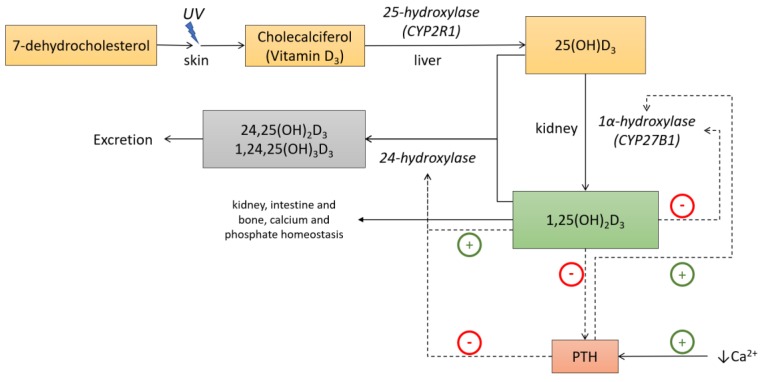Figure 1.
Vitamin D metabolism and functions. Under ultraviolet B light (UVB) exposure, 7-dehydroxycholesterol is converted to vitamin D3 in the skin. First, hydroxylation occurs in the liver where it is converted to 25-hydroxyvitamin D3. 25-hydroxyvitamin D3 is further converted in the kidney to its active metabolite, 1α,25-dihydroxyvitamin D3. In the kidney, 1α-hydroxylase is stimulated by the parathyroid hormone (PTH) and feedback inhibited by 1α,25-dihydroxyvitamin D3. 1α,25-dihydroxyvitamin D3 targets the intestine, kidney and bone to regulate calcium and phosphate homeostasis. Adapted from Lim et al [6].

